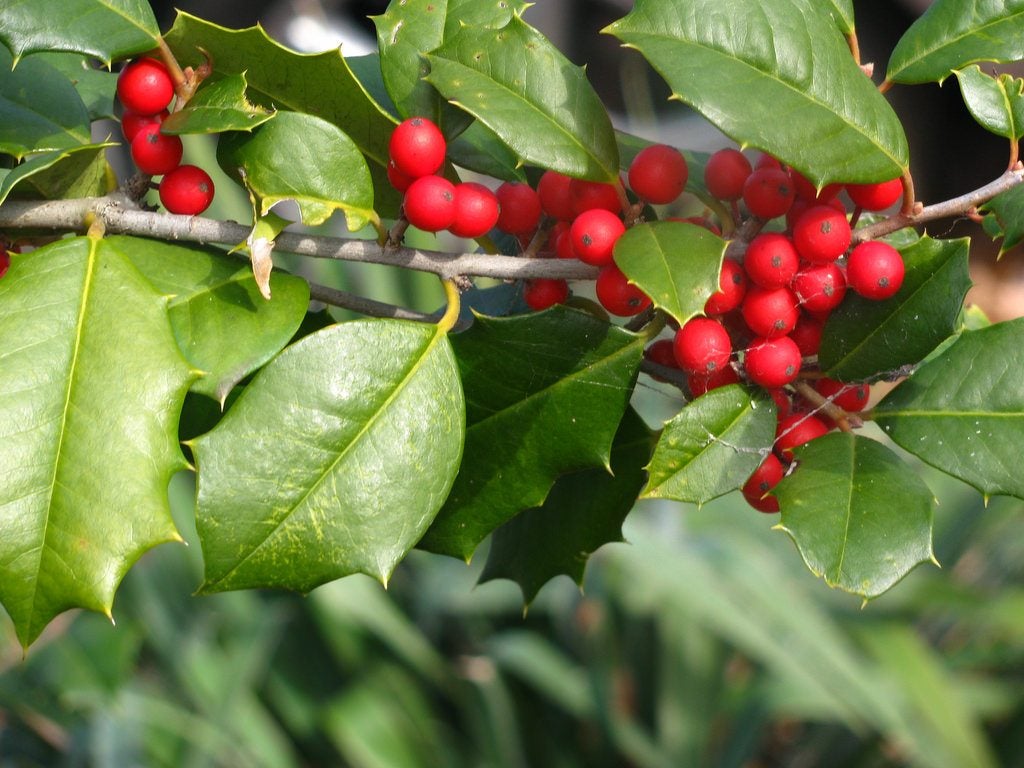Propagation Of Holly Shrubs With Holly Cuttings


Holly cuttings are considered hardwood cuttings. These differ from softwood cuttings. With softwood cuttings, you would take tip cuttings from the branch ends. When you are propagating holly bushes, the holly cuttings are taken from that year's new growth.
Propagation of Holly Shrubs
Holly cuttings are made from canes of new growth that have been removed from the holly bush. Once you have these canes, you can cut them into pieces about six inches (15 cm.) in length.
Propagating holly should be done while the bush is dormant. If your holly is deciduous, this means your cuttings won't have any leaves on them. Although they have no leaves, you will see bumps on the canes. These are known as bud unions. This is where the following year's leaves are going to grow from.
For evergreen hollies, you will take cuttings when the weather is cold and you should remove all but the top two sets of leaves from the cuttings. The bud union on evergreen hollies will be where the leaves meet the stem. When you are propagating holly and removing a piece from the plant itself, you should cut at the bottom just below one of the bud unions.
Then, from this piece you will partially cut about three quarters of an inch (2 cm.) above another bud union, which should give you a good 6 inches (15 cm.) of cutting that can be planted.
Following this procedure will help you know which is the top end and which is the bottom planting end of the holly cuttings. This also helps because the cuttings are now considered "injured" and an injured plant will develop roots where the callous develops over the injury to the holly bushes.
How to Grow Holly Cuttings
Growing holly cuttings is not at all difficult. You will simply take your cuttings and dip them in a compound used for rooting. There are various strengths to the rooting compound and your garden store can let you know which one you need for growing holly.
Sign up for the Gardening Know How newsletter today and receive a free copy of our e-book "How to Grow Delicious Tomatoes".
For deciduous types, take your dipped cuttings and line them up so the ends that are dipped are even. This way you can take the cuttings and tie them into bundles. You will want to plant your growing holly in an area in your garden that receives full sunshine. Find that area and dig a hole that is at least 12 inches (30.5 cm.) deep.
Make sure your hole is large enough to hold all of the bundles you have made of the cuttings. Put these bundles into the hole upside down. There is a reason for this. You want the butt end of the cuttings facing upward. Make sure you completely submerge your growing cuttings in the ground, about six inches (15 cm.) below the surface. Cover these cuttings with soil completely.
You do not want any part of the growing holly cuttings to be sticking out of the soil. Make sure you mark your growing area with a stake so you can find them when you start gardening in the springtime. You also might want to use moist peat to cover the cuttings with before you put soil over them.
In the springtime, you will see holly bushes appearing. You can transplant them or leave them right where they are. *Alternatively, you can simply plant the cuttings (without burying them) as soon as you take them in late fall or whenever the ground is not frozen.
For evergreen types, stick the ends treated with rooting hormone about 3/4 to one inch (2 to 2.5 cm.) deep in a medium of coarse sand - in a suitable area outdoors. These will need to be watered frequently throughout fall, as the sand will drain quickly.
Unless your winters are particularly dry, there's no need for watering during this time, especially if you get snow. Resume watering in spring and continue throughout summer. This method works best if the cuttings are left until the following spring, at which time there should be adequate root growth for transplanting elsewhere.

Heather Rhoades founded Gardening Know How in 2007. She holds degrees from Cleveland State University and Northern Kentucky University. She is an avid gardener with a passion for community, and is a recipient of the Master Gardeners of Ohio Lifetime Achievement Award.